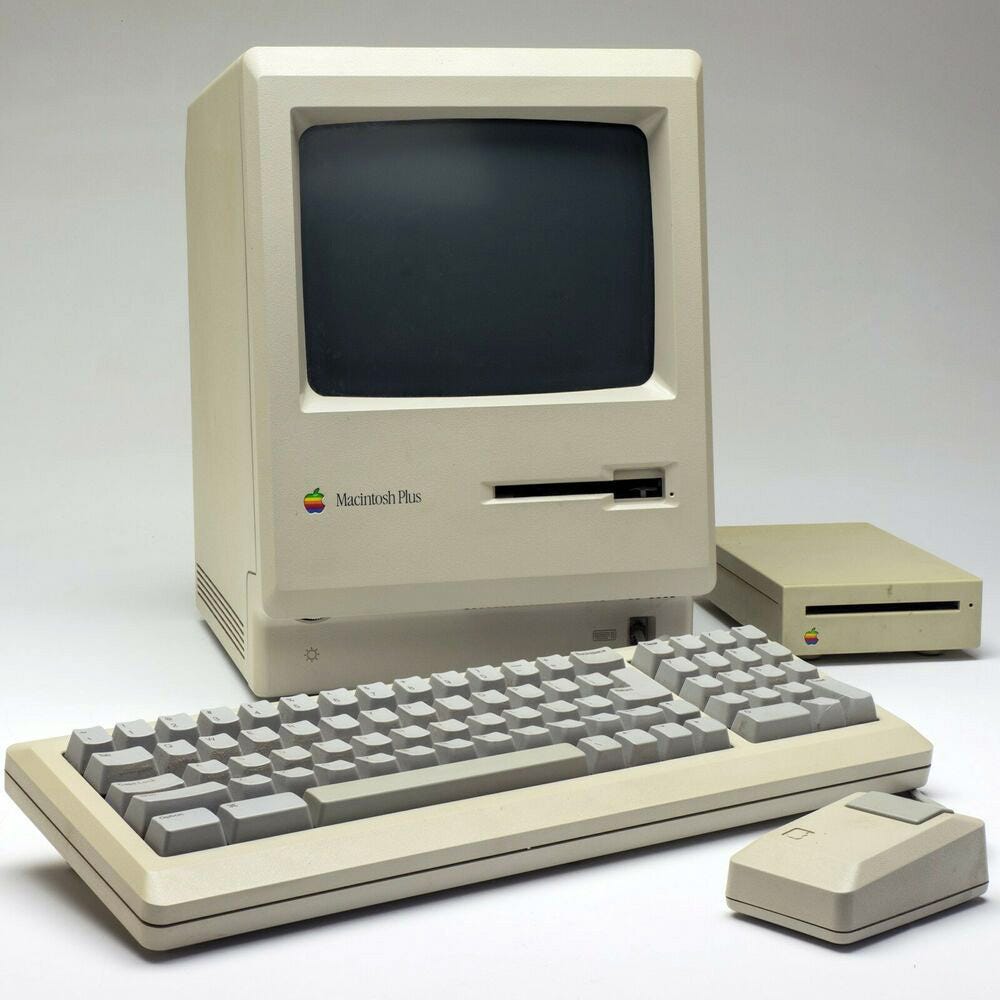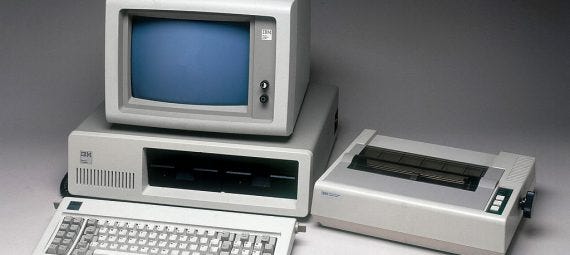Gadgets: Electronic: Personal Computers
Reservations Recommended, Chapter 3:
“Well,” says Belinda. “Just to give you an idea — imagine that you’re looking at your computer screen.”
Gwen shudders theatrically. “The prospect terrifies me, but go ahead.”
“You’re a computer-phobe?” asks Belinda.
“Definitely,” says Gwen, “but go on.”
Belinda’s estimation of Gwen drops very low indeed. “Hmm,” she says. “That’s interesting. Well, if you can do it without making yourself sick, imagine that you’re looking at the screen and there’s a page of text on it. But some of the words and phrases are active. If you click your mouse — ”
“Oh, dear. I was afraid we were going to hear about the dreaded mouse. Just the idea of clicking my mouse sounds obscene.”
“You click your cursor, then — ”
“A curse on cursors!” cries the witty Harold.
“ — on one of these active words,” continues Belinda without a pause, “you go immediately to some other text. Okay?”
Kraft wrote Reservations Recommended in 1988 and 1989. It was published in 1990. Personal computers looked like this:
And this:
Gadgets: Hyperlinks and Hypertext and Hypercard
Computer History Museum, “Timeline of Computer History: 1987”:
Clicking on hyperlinks is what lets us “surf” the Web instead of plodding through it. Yet after its initial invention in the 1960s, computer hypertext had gone underground for 20 years. It got so obscure that the main father of the Web, Tim Berners-Lee, may have unknowingly re-invented it in 1980. Hypertext’s original inventors—and some true believers—had kept developing new applications, but mostly in academic environments or for specialized clients like the military. Without being named as such, hyperlinks had also been used in some online help systems and CD-ROMs.
By the late 1980s, a minor resurgence of interest leads to commercial hypertext programs like Owl—and then Apple’s well-hyped Hypercard. Soon, people are producing their own “stacks” of linked cards on every topic, as well as writing non-sequential hyper-novels. But HyperCard is standalone; you can only click through to other cards on the same computer.
See also:
Gadgets, Electronic TG 83; TG 84; TG 433; Car Phone TG 439; Kitchen TG 457
Issue Number 21 of The Babbington Review is now on Substack.
Have you missed an episode or two or several?
You can begin reading at the beginning or you can catch up by visiting the archive or consulting the index to the Topical Guide.
You can listen to the episodes on the Personal History podcast. Begin at the beginning or scroll through the episodes to find what you’ve missed.
You can listen to “My Mother Takes a Tumble” and “Do Clams Bite?” complete and uninterrupted as audiobooks through YouTube.
You can ensure that you never miss a future issue by getting a free subscription. (You can help support the work by choosing a paid subscription instead.)
At Apple Books you can download free eBooks of Little Follies and Herb ’n’ Lorna.
You’ll find overviews of the entire work in An Introduction to The Personal History, Adventures, Experiences & Observations of Peter Leroy (a pdf document) and at Encyclopedia.com.





